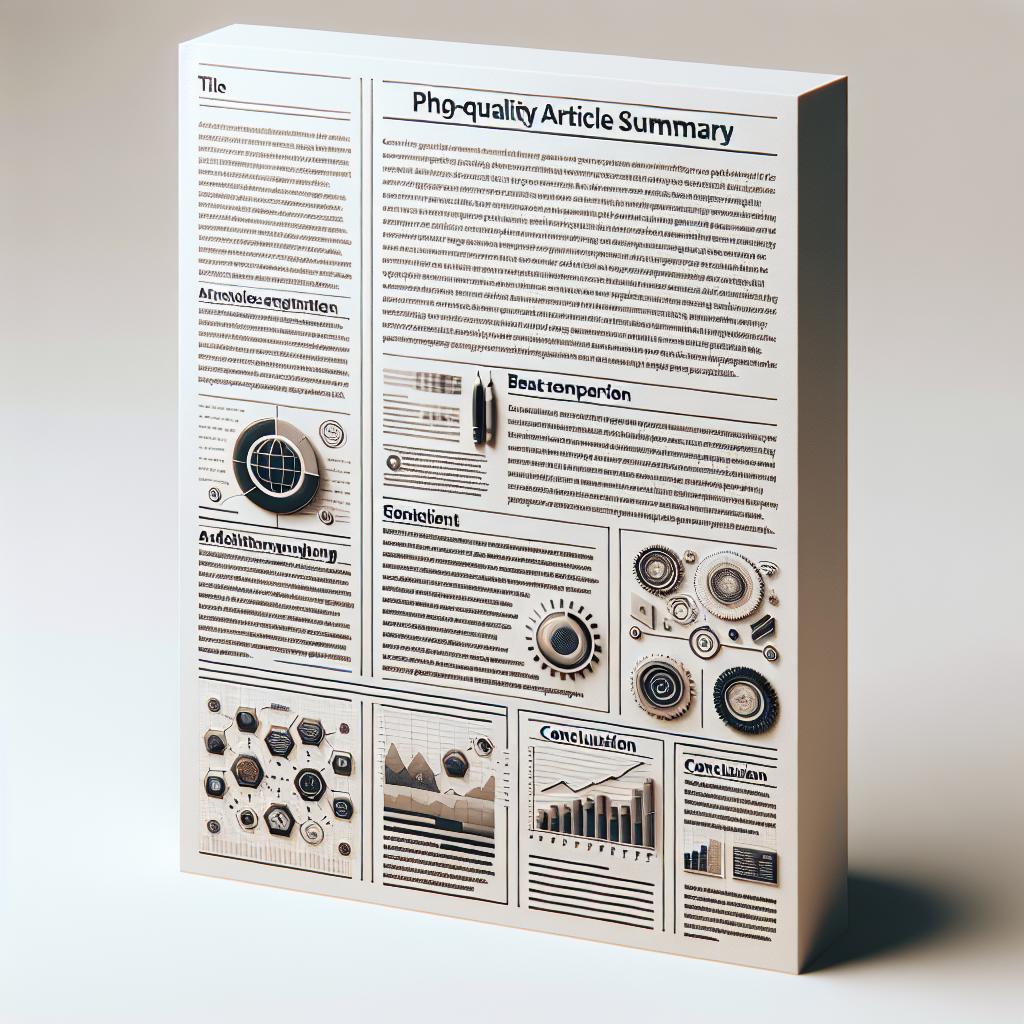Writing an article summary is an essential skill for bloggers and content creators that allows them to effectively communicate the essence of longer pieces of content. A well-crafted summary not only engages readers but also encourages them to delve deeper into the subject matter. With over 15 years of experience in creating impactful blog content, let’s explore how to write compelling article summaries that resonate with your audience.
Understanding the Purpose of an Article Summary
An article summary serves as a concise rendition of a longer work, distilling it into essential points while preserving its core message. The primary purpose is to give readers a clear and quick understanding of the content without requiring them to read the entire piece. This is especially important in today’s fast-paced digital landscape where many readers skim rather than read in-depth.
Furthermore, a summary helps improve the SEO of your blog by including keywords and phrases that may attract more readers. When done correctly, it serves as a powerful tool for enticing potential readers to explore the full article.
Key Steps to Writing an Effective Article Summary
Writing an effective summary involves several key steps. Here’s how you can go about it:
1. Read the Article Thoroughly
Before crafting a summary, ensure you read the entire article completely. Understand the main arguments, supporting details, and significant points presented by the author. It may help to take notes as you read, highlighting key phrases or statistics that stand out.
2. Identify the Main Ideas
After you have finished reading, identify the article’s main ideas. These typically include the thesis or primary argument, major supporting points, and any conclusions drawn by the author.
Example Table: Identifying Key Elements
| Element | Description |
|---|---|
| Thesis | The main argument or point made by the author. |
| Supporting Points | Key evidence or arguments backing the thesis. |
| Conclusion | Final thoughts and implications of the findings. |
3. Write a Draft
Once you have identified these elements, begin drafting your summary. It should start with a statement of the article’s main argument and then briefly outline the supporting points. Keep the language clear and direct to make it easy for readers to grasp the central themes quickly.
4. Edit and Refine
After drafting your summary, take some time away from it before reviewing. This will give you a fresh perspective and help you identify areas that may need further clarity or conciseness. Consider the readability of your summary, ensuring that it is devoid of jargon and unnecessary complexity.
Best Practices for Crafting Article Summaries
In addition to the steps outlined, following best practices can enhance the quality of your summaries:
– Be concise: Aim for a length that captures the essence without rambling—ideally between 150 to 200 words.
– Use active voice: It helps keep the writing dynamic and engaging.
– Avoid including personal opinions unless required: Stick to an objective recounting of the original article.
My Opinion
In conclusion, mastering the art of writing effective article summaries can greatly enhance your blog’s engagement and readability. By following these outlined steps—from grasping the main ideas to crafting and refining your summary—you can provide valuable insights to your audience in a digestible format.
Suggested Related Themes
- Crafting the Perfect Article Review for Your Blog
- A Comprehensive Guide to Writing Engaging Articles
- Mastering the Art of Article Critique
By incorporating these suggestions into your writing process, you can elevate your blog and connect more meaningfully with your readers. Happy summarizing!

